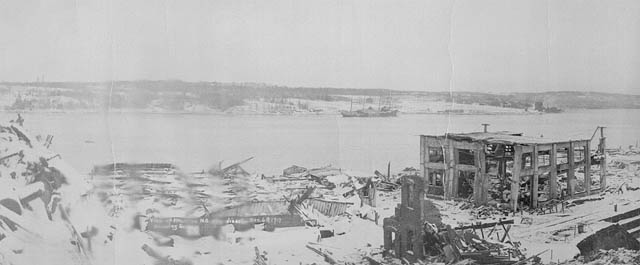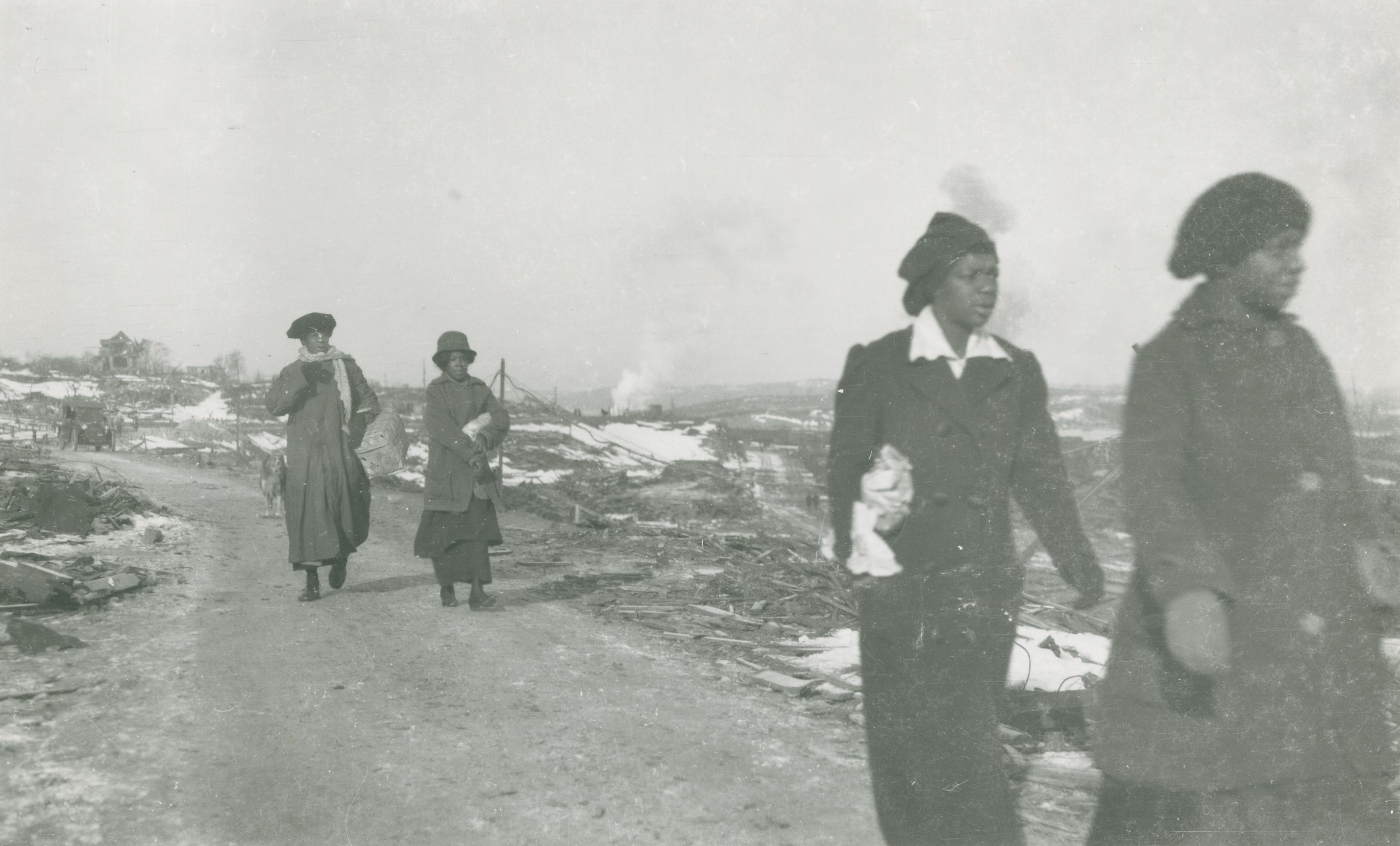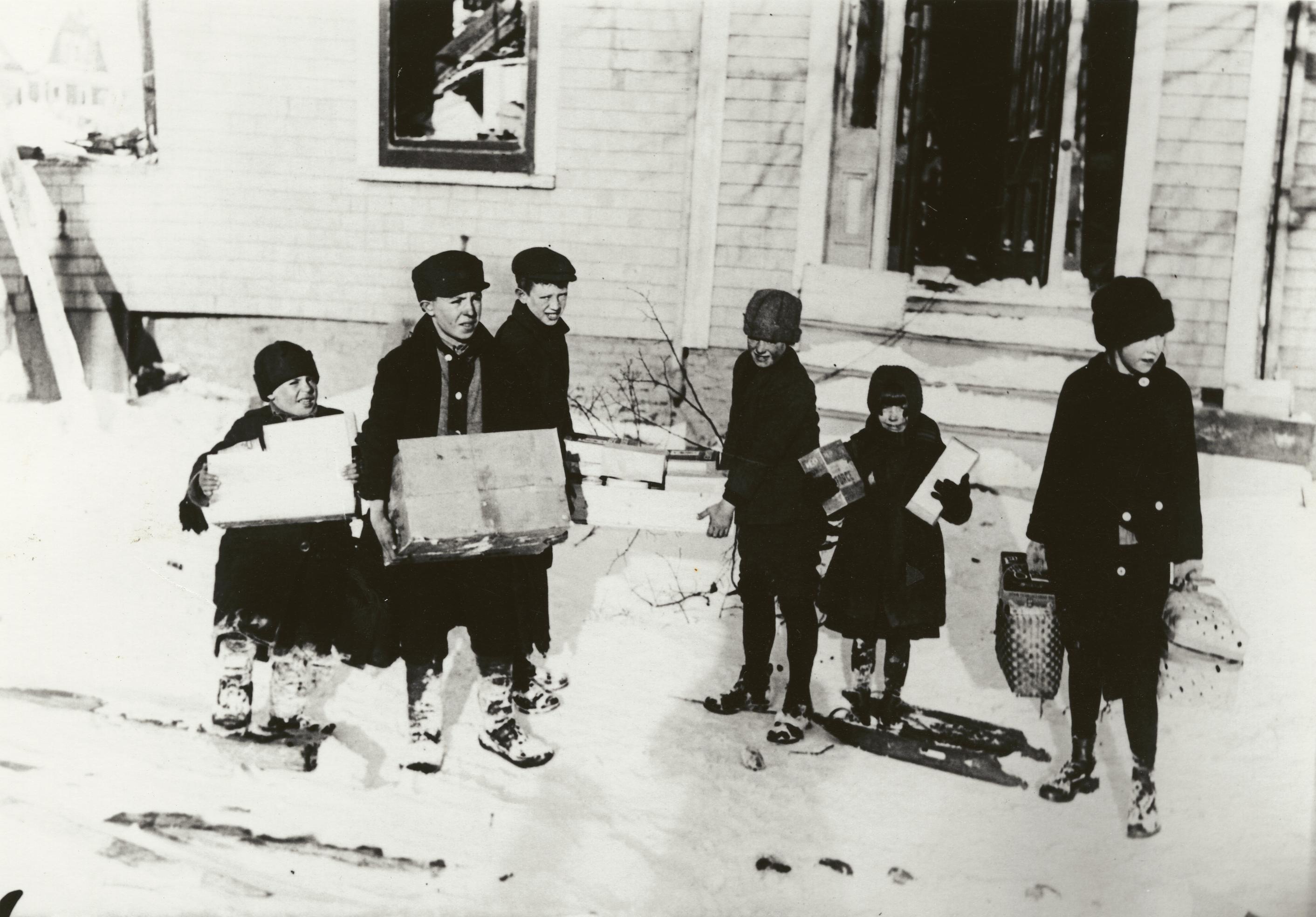The 1917 Halifax Explosion is well-known as the biggest human-made explosion in the pre-atomic era. The event was also the largest mass-blinding in Canadian history and it played a crucial role in the founding of the Canadian National Institute for the Blind (CNIB). (See also Blindness and Visual Impairment.)

Halifax Explosion
By 1917, the Halifax harbour acted as one of the main gathering points for Allied ships sailing to the war in Europe (see First World War). On 6 December 1917, a relief ship named Imo departing Halifax was moving too fast and passing ships on the wrong side in the narrow harbour. A munitions ship named the Mont-Blanc that was entering the harbour, encountered the Imo in its path. The ships tried to avoid each other but failed. The Imo struck the starboard bow of the Mont-Blanc. The sparks from the collision lit drums of benzol, a flammable coal-tar product, stored on the deck of the Mont-Blanc. The Mont-Blanc drifted toward the Halifax waterfront, belching huge plumes of smoke as barrels shot off the ship and exploded mid-air.
The Mont-Blanc burned for approximately 20 minutes during Halifax's morning commute. Thousands of people heading to work and to school stopped to watch. The Mont-Blanc crew fled on lifeboats for the Dartmouth shore, on the opposite side of the harbour, as the burning ship, carrying TNT and other explosives, drifted to Pier 6 on the Halifax side. The pier sits at the bottom of a hill and many people in the houses overlooking the incident watched from their windows.
The Mont-Blanc exploded at about 9:04:35 a.m., sending a devastating shock wave over the hill and into downtown Halifax. Debris fell from the sky, hurting more people. In a city of approximately 50,000 people, nearly 2,000 died and 9,000 were hurt. Because so many were staring at the ship when it exploded, hundreds of people suffered vision loss. Men, women and children were injured from the explosion and many eye injuries were caused by shattered window glass. (See also Halifax Explosion.)
Largest Mass-Blinding
In the days following the explosion, 12 ophthalmologists helped 592 people suffering from eye injuries. The eye specialists performed 249 enucleations (removal of eyes). Of those, 16 people had both eyes removed. A 2006 article in the British Journal of Ophthalmology describes how one of the doctors, George H. Cox, an eye, ear, nose and throat specialist from the town of New Glasgow, Nova Scotia, reached Halifax on the evening of 6 December. According to Cox’s undated personal records he and 11 doctors as well as nurses and volunteers, “had to make our way along streets and tracks blocked and covered with debris of all sorts…every here and there, dead men on piles of black stuff. The whole area was darkened by smoke or lit up by flames from the burning debris.”

At the Camp Hill Hospital, Cox treated people with eye injuries for several days without stop. Many people had shards of glass stabbed into their eyes, leaving them badly damaged or ruined. Cox and his team performed 75 enucleations and five double enucleations in four days. He repaired lacerated eyelids and removed pottery, nails and mortar from orbits (eye sockets). Many patients died of their horrific injuries.
Founding of the CNIB
The Halifax Explosion proved crucial in the founding of the Canadian National Institute for the Blind (CNIB). The forerunner of the organization started in 1906 in Ontario as the Canadian Free Library for the Blind, which circulated embossed (raised print) books to readers. By 1917, the library was called the Canadian National Library for the Blind. After learning of the mass-blinding caused by the Halifax Explosion, the library raised money to help with the relief effort.
Nova Scotia was already a North American leader in care for the blind. It was home to the well-regarded Halifax School for the Blind and had an 1882 law that ensured free education for people who were blind. During the First World War, Halifax also saw a steady stream of blinded military personnel returning to Canada after experiencing superior care in England. However, the combination of the explosion’s mass-blinding, and the number of returning and recently blinded soldiers, required more options and resources to rehabilitate and assist Canadians. The Canadian National Institute for the Blind was founded in 1918 to respond to these necessities.
Early Work of the CNIB
Between the Halifax Explosion and the First World War, there were suddenly hundreds of people blinded in mid-life, who intended to return to their old lives. That meant that following the aftermath of the explosion and the war, the focus on the physical care of the injured, shifted to caring for the needs of the person. To address these needs Canada sent people to England to learn how that country integrated people without sight into mainstream society.
Did you know?
Edwin A. Baker, one of the co-founders of the CNIB, was blinded as a soldier during the First World War. He recuperated at St. Dunstan’s Hostel for Blind Soldiers and Sailors in London, England. Baker brought the skills and perspectives he learned at St. Dunstan’s to Canada and the CNIB.
The early CNIB helped people learn different skills, including to read Braille and to knit. It introduced people to tools like washing machines and bread mixers to increase their independence. Volunteers organized social outings, which connected the recently blinded. Volunteers also organized classes to teach people about life after losing their sight.
A century after its founding, the CNIB operated under a slogan inspired by the Halifax Explosion: “Seeing beyond vision loss since 1918.” In the present-day, the CNIB continues to offer services and programs in Nova Scotia and across Canada.


 Share on Facebook
Share on Facebook Share on X
Share on X Share by Email
Share by Email Share on Google Classroom
Share on Google Classroom















